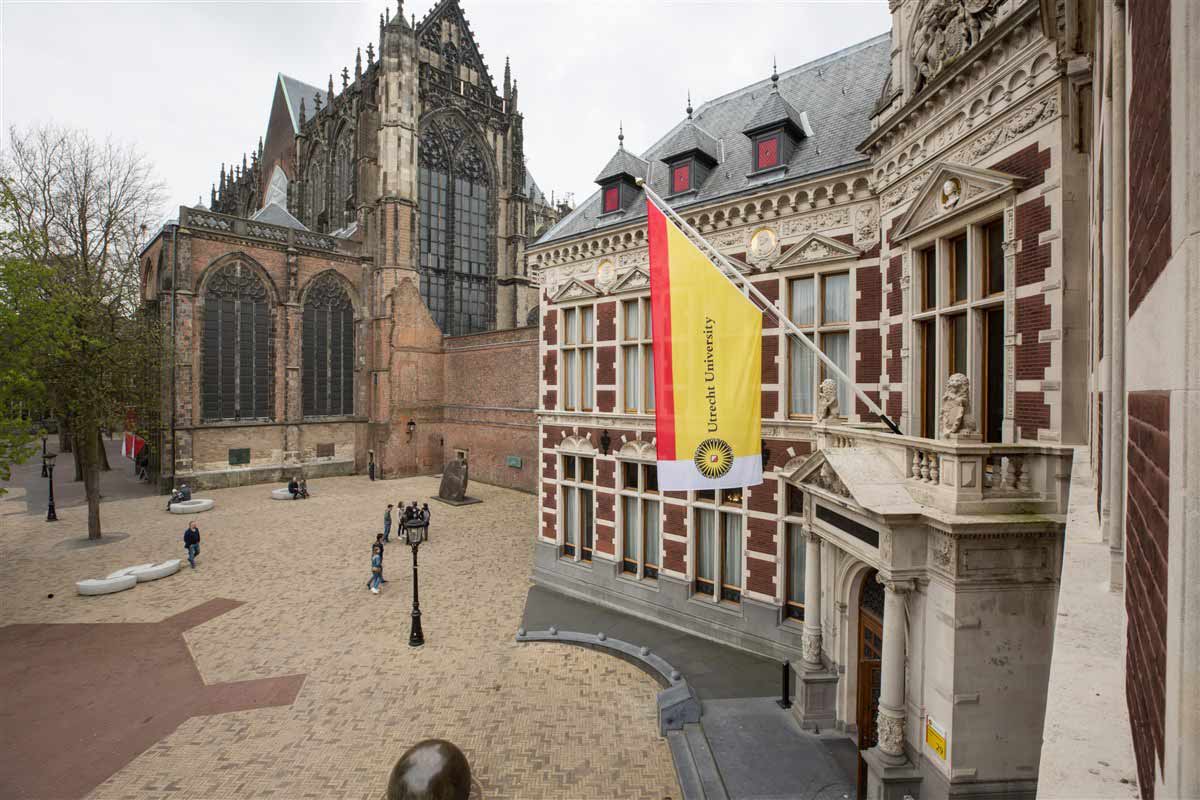Built for Impact:
How Utrecht University’s multidisciplinary research into the Dynamics of Youth will help improve the health, well-being and engagement of future generations

A child’s path from infant to adult is influenced by a myriad of factors—from biology to socioeconomics, education, geography and government policy. Instead of sequestering the study of these factors to one university department, Utrecht University is taking a different approach, and it’s already yielding exciting research.
UU’s unique, multi-disciplinary, impact-driven method draws on a broad cross-section of scientific expertise as well as insights from humanitarian and social sector organizations to promote, strengthen and evaluate efforts aimed at improving the health, well-being and participation of all youth.
A young researcher meets a new colleague, taking the lift at Utrecht’s Child Expertise Centre. In a short elevator pitch, she explains to her bemused and curious co-worker what Utrecht University's strategic research theme Dynamics of Youth is about.
“In order to build youth for the future, we need to have a better understanding of what it takes for problems to be addressed at the right level—at the societal context or the individual,” says Prof. dr. Catrin Finkenauer, Director of the University’s Dynamics of Youth program. Finkenauer, who is also the chair of Interdisciplinary Social Sciences: Youth Studies, notes that interventions influence one another, so understanding the myriad of contributing factors shaping a child’s development is critical to developing successful strategies.
The need for these multiple perspectives is why UU has adopted a model that calls on faculty from a variety of disciplines, including social and behavioral sciences, medicine, geosciences, veterinary medicine, law, economics, governance, and the humanities. Researchers across the faculties collaborate with societal partners within interdisciplinary hubs to find answers to crucial questions for future generations.
Surprising research from unique collaborations
“In all our collaborations and projects, people surprise and inspire each other,” Finkenauer says. “Once they embrace the complexity and dynamics of youth development, they show that connecting different disciplines, perspectives and methods inspires innovative research and provides new answers to sometimes longstanding questions.”
Recent projects have included a collaboration between an expert in language development from the social and behavioral sciences department and a humanities scholar to examine the impacts of children using “textese” in platforms like WhatsApp. The scholars studied children between the ages of 10 and 13 to determine if using alternative spelling and the purposeful dropping of letters while communicating over apps would hinder typical language development. Surprisingly, they found that the children were capable of differentiating language genres and using them in the proper context. In addition, their research suggests that children who made more “mistakes” using textese are actually more proficient linguists.
In yet another unique project, a psychiatrist worked with social science faculty to examine the impact of childhood trauma on DNA. They found that DNA can change after traumatic events, even adjusting to help adults avoid psychological issues like depression later in life.
Finkenauer finds such collaborations exciting, as researchers often use new methods they would not have previously considered if they had only worked within the confines of their own discipline. “Dynamics of Youth represents the inspiration that can happen when people from different disciplines come together and work together. These collaborations will help us to increase the societal impact of our research on youth and build for the future.”
Outside-in perspective
Another unique aspect of UU’s approach is its reliance on guidance from and collaboration with the social sector. A Societal Advisory Board comprised of humanitarian and social sector organization representatives assists Dynamics of Youth in evaluating, monitoring and achieving more impact. In practice, this means weighing in on projects at the proposal stage, to ensure they align with the needs of practitioners, policymakers and the public at large.
As part of the international Health Behavior in School-aged Children Study (HBSC), which is being carried out under the auspices of the WHO and in close cooperation with Dutch Government Offices (Social and Cultural Planning Bureau & The Trimbos Institute), UU researchers track developmental and societal changes via ongoing monitor studies. Key aspects covered include the digitalization of the social world (internet, social media, games), tolerance, empathy and social competence in a context of growing cultural diversity, as well as the impact of parental stress and divorce on children’s wellbeing.
UU’s Dynamics of Youth program focuses on areas it feels it can drive the most positive change:
- Research impact: Contribute to advancing understanding and advancing scientific method, theory and application across and within disciplines by conducting and supporting excellent, robust and FAIR research on child/youth development;
- Societal impact: Contribute to solving societal challenges in the field of child/youth development; and
- Capacity building: Increase professional skills and qualifications of students, researchers, policymakers and practitioners in the field of child/youth development, thereby also contributing to a changing sector that recognizes and rewards talent in research, societal impact, knowledge exchange and education.


Utrecht University’s Campus.
Utrecht University’s Campus.
Impact-driven research
Due to its focus on developing scholarship that can be utilized by a variety of sectors, Dynamics of Youth is not producing research that sits on a shelf. Finkenauer and her colleagues hope that by taking their unique approach to research and collaboration, they can identify interventions that help children along their pathway to adulthood. At times, that can mean questioning conventional wisdom about childhood development.
For example, a number of previous studies have suggested a correlation between lower socioeconomic status and chronic illness in children and adolescents, leading to lower societal participation, poorer mental health and well-being in adulthood. However, Finkenauer notes that research into geography shows these effects are highly dependent on the national, regional and even neighborhood context. “We don’t know as much as we thought we did,” she says.
One project examining this new direction is headed by an urban geographer at UU, who is combining neighborhood data with personal and biological characteristics to better understand the interplay between them. This could have implications for specific neighborhood intervention strategies, which, in their current form, could be too general.
Inspiring process
Collaboration across disciplines may require researchers to take some additional time at the outset, but Finkenauer notes that by valuing teamwork over individualism and accelerating the improvement of science and scholarship to increase societal impact, Dynamics of Youth is living out UU’s core values. It also allows them to be more imaginative: “The research conducted in Dynamics of Youth is without a doubt more creative and inspiring due to our efforts to bridge disciplinary boundaries and collaborate with societal partners.”
This content was paid for by Utrecht University and produced by Inside Higher Ed's sponsored content team. The editorial staff of Inside Higher Ed had no role in its preparation.


